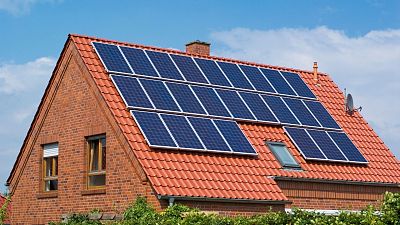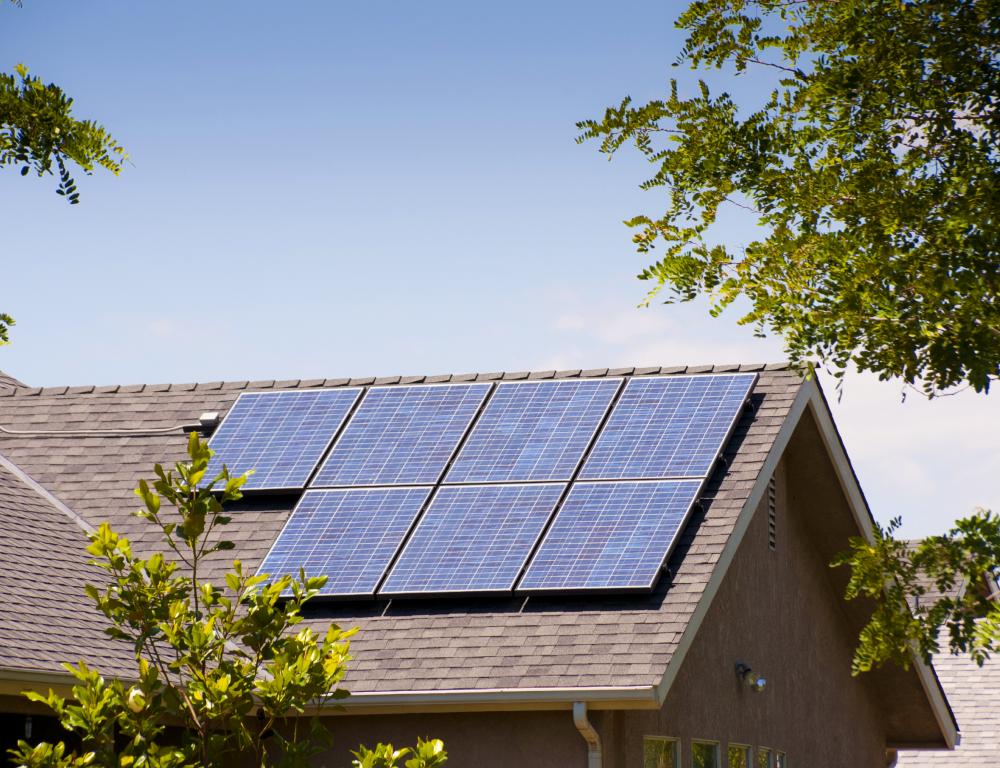Best Value & Quality Solar Energy Solutions. Solar panels: Everything you need to know Fort Myers, Fl. For Free Consultation Dial us at Call (732) 907-8400
Some commonly asked questions
- What is a grid-tied solar system?
- What is a solar charge controller?
- What to consider in a solar mounting system?
- What to know about a solar panel warranty
- What is return on investment (ROI) of residential solar panels?
- Solar financing options: How do you pay for solar?
- What is an off-grid solar system?
- What is a hybrid solar system?
- What are solar inverters?
- How much energy does a house use?
- What are the basic components of a solar power system?
- What are the three types of solar inverters?
- Can you install solar panels yourself?
- How much energy does a solar panel produce?
- What is solar leasing?
- What is a solar power system?
- Why do you need to have a solar battery?
- What’s the best orientation and angle for solar panels?
- What are the 3 types of solar panels?
- How do you install solar panels?
Fort Myers (or Ft. Myers) is a city in and the county seat[5] and commercial center of Lee County, Florida, United States. As of the 2010 U.S. Census, the population was 62,298 and in 2020 was 86,395.[4][6] Together with the larger and more residential Cape Coral, it anchors a metropolitan statistical area (MSA) which comprises Lee County and has a population of 770,577 in 2019.
Solar energy has been around for a while now but is only just starting to become mainstream in more and more countries.
With this article, we’ll introduce you to all you need to know about solar panels and how they work. If you’re new to the topic, then this article will give you a thorough introduction; while if you already have some knowledge of solar energy and would like more details on its benefits and potential pitfalls then read on…
What Is A Solar (PV) Panel?
Solar panels are the key component of a photovoltaic (PV) system, which collects and converts sunlight into electricity. There are two primary types of solar panels: monocrystalline silicon and polycrystalline silicon. Monocrystalline panels are used in residential and commercial rooftop solar PV systems, while polycrystalline panels serve as the primary component in utility-scale or ground-mounted PV systems.
There is a wide range of applications for solar panels, including solar water heating, home heating, hot water generation, greenhouses, remote power stations, and wind turbines. Solar Panels come in various sizes to meet your needs – from small wall mounts to large roof mounts. A typical system can run for at least 20 years on average before requiring replacement or service.
How Do Solar Panels Work?
Solar panels work by converting the energy from sunlight directly into electricity They convert all of the energy coming in, including ultraviolet and infrared radiation, plus heat.
The materials used to make solar panels have an efficiency rate on average of around 20%. This means that they collect a certain amount of energy out of sunlight and turn it into electricity while wasting some of the photons. However, this can be improved by increasing the surface area or adding more layers to increase efficiency.
In terms of design, there are two main types: crystalline silicon and thin-film panels. Crystalline silicon is more expensive than thin film but has more power potential as it’s larger and uses less material per panel. Thin film costs less but has a smaller surface area which limits its power potential.
However, the prices are decreasing due to economies of scale with mass production and manufacturing advances
Which Type Of Solar Panel Is Better For Home Use?
Solar panels are generally classified as monocrystalline, polycrystalline, or thin film. Monocrystalline and polycrystalline solar panels are the most common types of solar panels on the market, but thin film solar panels have been around for a long time with their efficiency and price gradually increasing over time.
Monocrystalline is made up of one silicon crystal that’s split into a grid-like pattern. This type of PV uses less material than the other types which leads to cheaper production costs and greater efficiency rates. They are also less expensive to install because they provide more surface area on the roof to absorb sunlight. Polycrystalline solar panels use multiple silicon crystals which leads to a higher average efficiency rate when compared to monocrystalline; however, they need more material which can lead to higher installation costs.
Thin film solar panels are similar in design to traditional PV cells that were produced before digital technology was introduced. The downside is they tend not to perform as well as crystalline PV cells at high temperatures or near dark areas where there’s little sunlight available.
What Are The Benefits Of Monocrystalline Solar Panels?
Unlike many other types of solar panels, monocrystalline silicon solar panels are made from one single crystal. This means they’re much more efficient and have higher power output than polycrystalline or amorphous silicon panels. Furthermore, there’s no need for a second electrical contact layer to improve the efficiency of monocrystalline solar panels. They also have superior weathering resistance, which means that they last much longer. Monocrystalline solar panels can produce up to 50 percent more energy than polycrystalline sheets.
What Are The Benefits Of Polycrystalline Solar Panels?
There are a number of benefits to choosing polycrystalline solar panels for your home or business. Polycrystalline panels are suitable for homes with high temperatures and lots of sunlight, as they can tolerate higher temperatures than mono-crystalline panels. They also offer better energy efficiency and the ability to handle more area than mono-crystalline panels.
Polycrystalline panels also have a higher productivity level than mono-crystalline panels. By adding one or two more layers of crystalline silicon cells to a panel, you can increase the efficiency by up to 20 percent. Additionally, polycrystalline technology allows for less loss in power generation when there is an excessive amount of shade on the panel. Polycrystalline solar panels are a great option if you plan on using solar power exclusively or partially, as they tend to be cheaper than mono-crystalline systems while still offering enough power output that you’ll save money in the long run.

How Big Is A Solar Panel?
Solar panels are an increasingly popular way to generate electricity, particularly for residential users. With the right system in place, homeowners can offset their energy costs by generating their own power.
But what do solar panels actually look like?
Solar panels come in a variety of shapes and sizes, but the most common type used in residential applications today is the polycrystalline solar panel. These panels are typically about 65 inches by 39 inches, or 5.4 feet by 3.25 feet, with some variation among manufacturers. SunPower, one of the leading solar panel manufacturers, produces panels that are 61.3 inches by 41.2 inches.
While the dimensions of solar panels can vary, the average panel produces around 200 watts of power. So, a standard 5.4kW solar system would require around 27 panels to reach that output.
The size of your solar panel system will ultimately be determined by a number of factors, including the amount of power you want to generate, the size and layout of your roof, and local code requirements.
If you’re considering going solar, be sure to consult with a qualified solar installer to determine the best system for your needs.
How Much Does A Solar Panel Cost?
Planning to buy solar panels? There are a few factors you should take into account when purchasing your system.
The first factor is the cost of materials. Solar panels have been dropping in price significantly over the last year.
Average costs for manufacturing a single solar panel used in residential applications have fallen from about $2.77 per watt.
Additionally, there is a difference between the number of watts produced by different types of solar panels, depending on their efficiency levels and the quality of their construction materials.
On average, photovoltaic systems comprised of high-efficiency modules will produce more power than those made up of standard modules, but they will also be more expensive to purchase and less efficient at producing energy than lower-performance systems.
What Are The Advantages And Disadvantages Of Going Solar?

There are many advantages to solar power. For example, it can offer a reliable and long-lasting source of energy, reducing your reliance on environmentally harmful fossil fuels. As well as this, solar panels are generally cheaper upfront than other alternatives, so you will see the benefits sooner rather than later. Solar panels also reduce greenhouse gas emissions while they’re in use (and the years after they’ve been decommissioned) so they contribute to a cleaner atmosphere.
However, there are some potential drawbacks to solar power too. One potential disadvantage is that PV technology can only generate electricity when the sun is shining – but this is also one of its greatest strengths. This means that if you don’t live in an area with constant sunlight, then you won’t be able to benefit from solar power at all. Another potential drawback is that PV technology only works when the air temperature is above freezing – so if you live in an area with cold winters then this may not be suitable for you either.
How To Clean A Solar Panel System?
Solar panels are designed to be easy to clean and maintain. There is no need for a complicated cleaning process: simply use a wet cloth or garden hose to gently wipe them down with water every few months.
The dirtiest part of the solar panel system is likely going to be the connections connecting different parts, so you should have these cleaned on a regular basis, especially if they are dirty or rusty.
A common, relatively simple way of cleaning the connections is using an all-purpose cleaner that contains mild abrasives like baking soda and vinegar. Simply apply this solution with a soft cloth and allow it to sit for 10 minutes before wiping any corrosion away.

